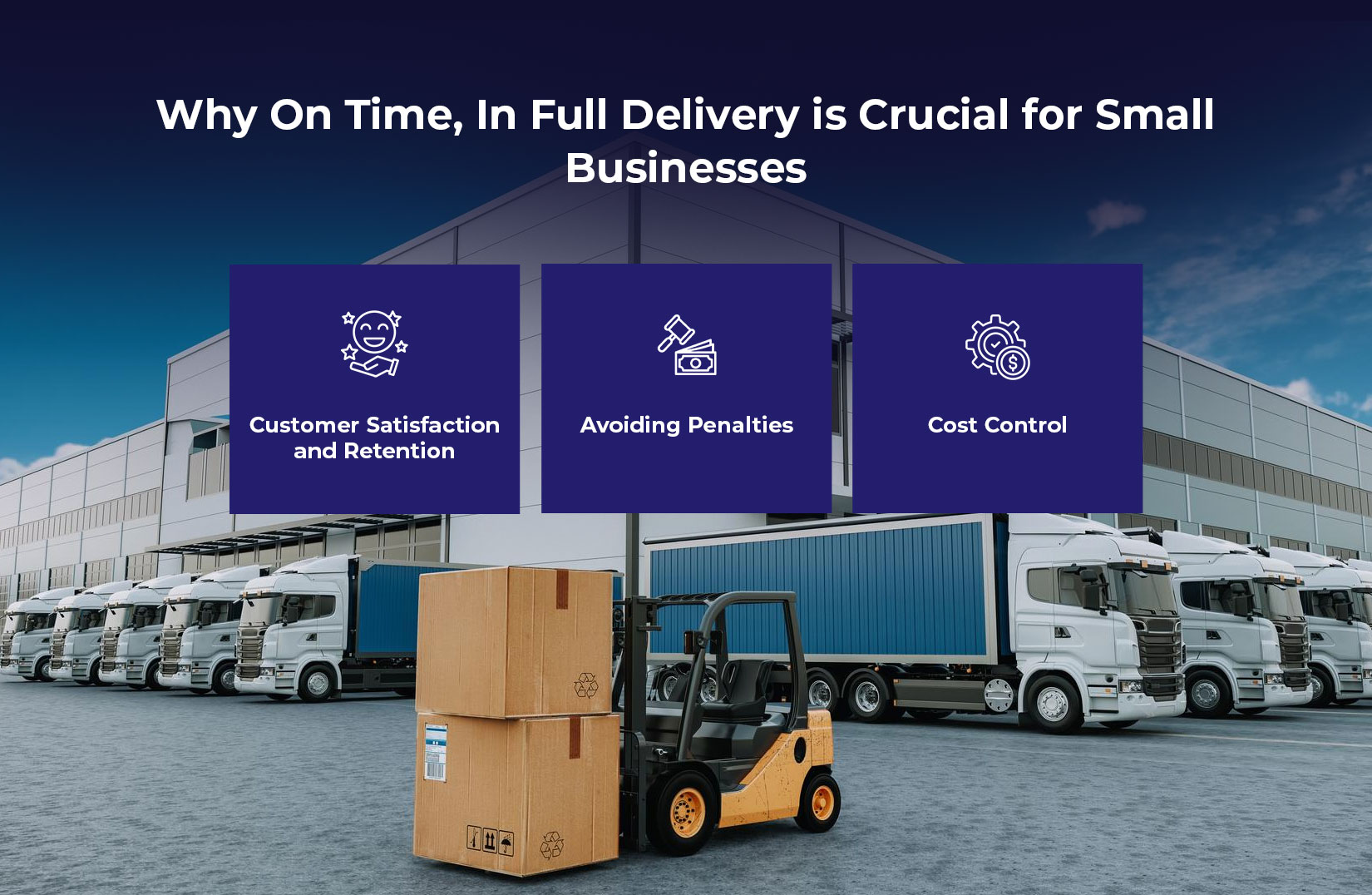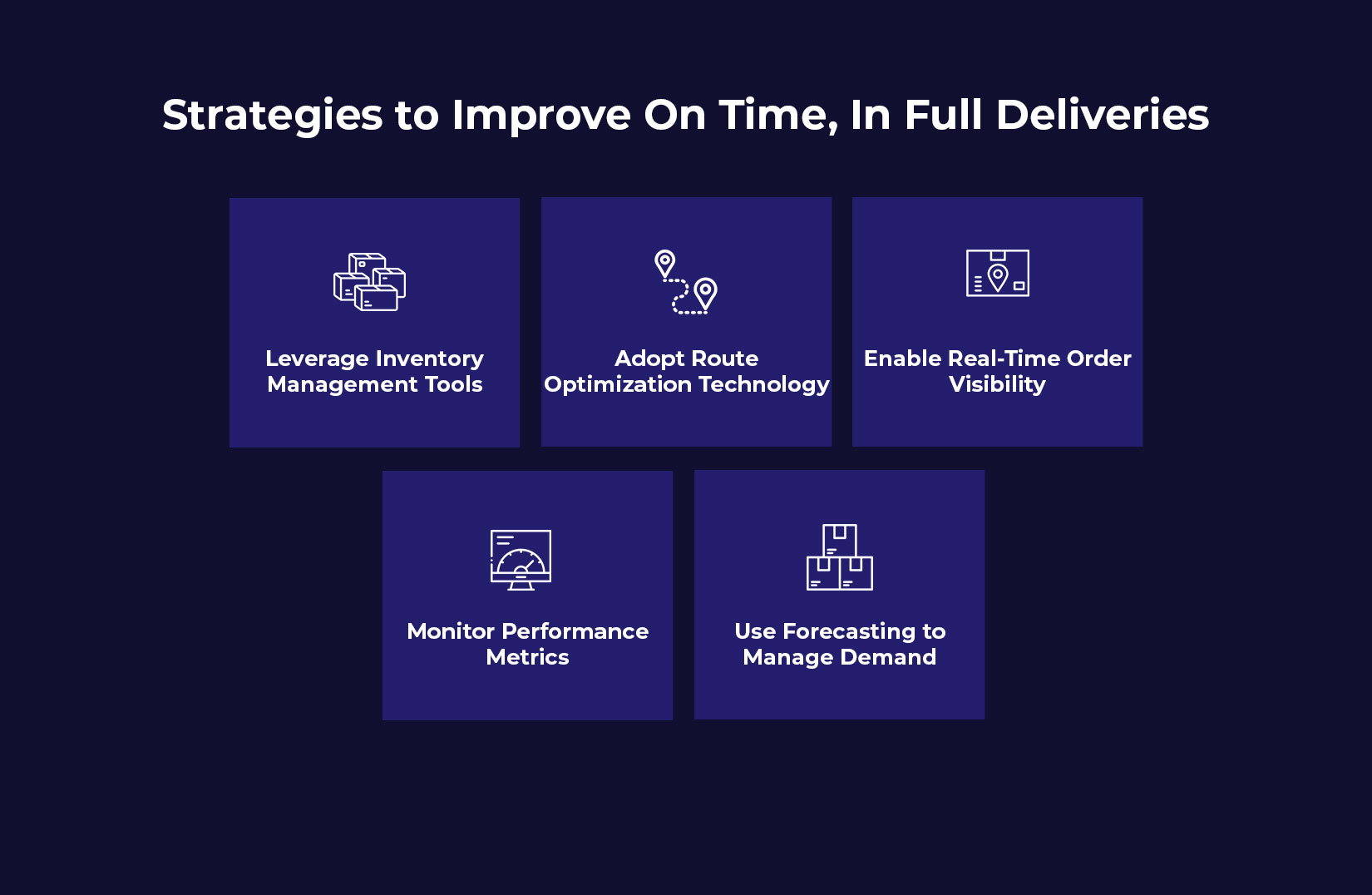
Outperform the Giants: Mastering OTIF for Small Business Growth
In today’s fast-paced logistics environment, small businesses often find themselves competing with industry giants that boast advanced infrastructure and expansive budgets. However, there’s one metric that can level the playing field- OTIF, or On Time, In Full delivery performance.
By focusing on optimizing OTIF, small businesses can increase efficiency. They can also improve customer satisfaction, and gain a competitive edge in the marketplace. In this blog, we’ll explore what OTIF means, why it matters, and how smaller operations can master it to go head-to-head with large enterprises.
What is OTIF?
OTIF, short for On Time In Full, is a logistics metric that measures how reliably a company delivers orders by the promised date and in complete quantity. A delivery is considered successful if:
– It arrives on time within the customer’s expected delivery window.
– It is in full, meaning no items are missing or substituted.
This metric is used across industries to track performance, meet retailer standards, and improve customer loyalty. Whether you’re a B2B or B2C, meeting OTIF expectations can be the difference between repeat business and customer churn.
Why On Time, In Full Delivery is Crucial for Small Businesses

For small and medium enterprises (SMEs), the pressure to perform is significantly higher than it is for large corporations. Without access to the same resources, meeting delivery promises becomes essential. As it helps in maintaining a strong customer base and reliable retail partnerships.
1. Customer Satisfaction and retention:
According to a study by Capgemini, over half of consumers will abandon a brand after just one poor delivery experience. For small businesses, this means a single failed delivery can translate into lost future revenue. Ensuring orders are delivered on time and in full helps establish trust and reinforces customer loyalty.
2. Avoiding Penalties:
Retailers often impose strict delivery standards. Missing on time, in full targets can result in chargebacks, penalties, or even contract termination. Small businesses must meet these expectations to maintain retail partnerships and secure future business.
3. Cost Control:
Failed or partial deliveries lead to re-shipments, returns, and customer service overhead. Maintaining high in full on time rates helps reduce avoidable logistics costs and improves overall profitability.
Challenges in Achieving OTIF for Small Businesses
Small businesses face unique hurdles when it comes to maintaining high delivery performance:
– Manual order processing
– Limited visibility into supply chain operations
– Inefficient last mile delivery
– Inaccurate demand forecasting
These issues can directly impact the ability to deliver in full on time.
Strategies to Improve On Time, In Full Deliveries

1. Leverage Inventory Management Tools:
Inventory issues are a common cause of partial deliveries. Investing in real-time inventory tracking helps prevent stockouts and ensures every order can be fulfilled accurately and completely. Businesses that adopt automated inventory systems see a 20% improvement in On time, in full performance, according to Aberdeen Group.
2. Adopt Route Optimization Technology:
Late deliveries usually stem from poor route planning. With modern delivery management software, businesses can schedule stops efficiently, avoid delays, and stay on track.
Tools like LogiNext offer:
– Route optimization
– Driver tracking
– Predictive ETAs
All of which help you deliver orders in full on time- even during peak demand.
3. Enable Real-Time Order Visibility:
Customers expect updates on their orders. Offering real-time tracking and status notifications not only enhances customer satisfaction but also reduces missed deliveries. Proactive communication about delays also reduces cancellations and helps maintain trust.
4. Monitor Performance Metrics:
Improving delivery performance starts with measuring it. Track metrics like delivery punctuality, order completeness, and exceptions. Analyze root causes for delays or short shipments and fix them quickly. Make OTIF On time in full data part of your weekly reviews to stay ahead of problems.
5. Use Forecasting to Manage Demand:
Accurate forecasting ensures that inventory levels match demand. Forecasting tools can use past sales data and seasonal trends to help businesses plan ahead. Well-forecasted demand reduces last-minute stockouts and overstock situations, both of which negatively impact on time, in full delivery rates.
Real-World Example
A boutique skincare brand shipping to national retailers was struggling with late and partial deliveries. After switching to an automated order and delivery system, they saw their OTIF rate rise from 70% to 93% in just four months.
The improvements led to:
– Better retail partner relationships
– Reduced penalties
– A 25% increase in repeat orders
This proves that smaller companies can absolutely meet enterprise-level standards with the right tools and processes.
Technology: The Great Equalizer
You don’t need massive infrastructure to compete. Today’s cloud-based logistics platforms offer scalable, affordable solutions tailored for small and mid-sized operations. These tools help manage everything from inventory to dispatching- boosting your ability to deliver in full on time without needing a massive team.
Popular logistics tech include:
– Real-time delivery tracking
– Dispatch scheduling systems
– Inventory management integrations
– Predictive analytics for forecasting
By adopting these tools, even the smallest operation can optimize on time, in full performance.
Final Thoughts
Success in logistics isn’t just about size; it’s about precision. While global giants may have more resources, small businesses can still outperform them in reliability and customer satisfaction.
Focusing on OTIF is a smart, strategic move that drives repeat business, builds trust, and ensures long-term growth. By leveraging automation, optimizing routes, and maintaining accurate inventory, small businesses can consistently deliver orders on time and in full.
The result? Stronger relationships, fewer penalties, and a powerful reputation that punches well above your weight class. So, book a demo with LogiNext and take your business to the next level.
57







@LogiNext